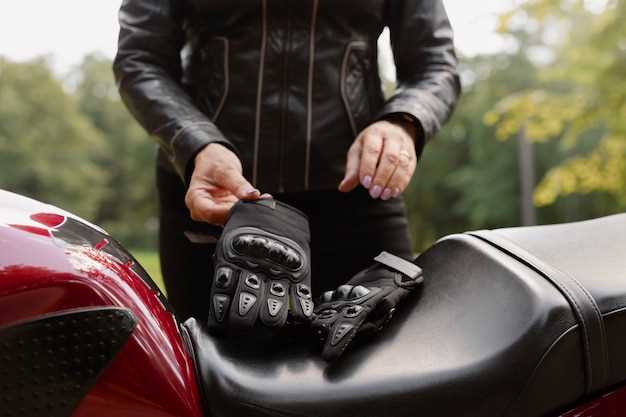

Embarking on your first motorcycle ride can be both exhilarating and nerve-wracking. Understanding the essential tips for a safe and enjoyable experience is vital for every beginner rider. With the right preparation, you can turn your initial ride into a memorable adventure rather than a stressful ordeal.
Before hitting the road, it’s crucial to familiarize yourself with your motorcycle. Knowing the controls and characteristics of your bike can significantly boost your confidence during your first ride. Take the time to practice basic maneuvers in a safe environment, ensuring that you become comfortable with starting, stopping, and turning.
Another vital aspect to consider is the importance of wearing proper gear. A full-face helmet, gloves, and protective clothing not only enhance your safety but also increase your comfort level as you embark on this new journey. Remember, your first ride should be about enjoying the freedom that comes with being on two wheels, while also prioritizing your well-being.
Choosing the Right Gear for Comfort and Protection

When preparing for your first motorcycle ride, selecting the appropriate gear is crucial for both safety and comfort. Proper gear can significantly enhance your riding experience while ensuring you are adequately protected from potential hazards.
Start with a high-quality helmet, as it is your most essential piece of safety equipment. Choose a full-face helmet that meets safety standards, as it provides maximum coverage and protection for your head and face. Ensure it fits snugly without being overly tight and has ventilation to keep you comfortable during your ride.
A durable jacket made from leather or high-quality textile materials is essential for shielding your upper body. Look for jackets that include built-in armor for added impact protection, especially in the shoulders, elbows, and back. Additionally, consider jackets with ventilation options to regulate temperature on warm days.
Don’t overlook the importance of protective pants. Dedicated riding pants, whether made of leather or reinforced textile, can offer protection in case of a fall. Many come with knee and hip armor, which enhances safety without sacrificing comfort. Make sure they have a comfortable fit that allows for movement while riding.
For your hands, invest in a sturdy pair of gloves that provide protection while allowing tactile feedback. Gloves made from leather or synthetic materials with reinforced knuckles will protect your hands during a ride. Ensure they fit snugly, allowing for a good grip on the controls without being restrictive.
Footwear is another critical aspect: wear over-the-ankle boots designed for riding. These boots should offer both protection and comfort, with features like reinforced toes and non-slip soles. Make sure they provide adequate ankle support to help prevent injuries in case of an accident.
Lastly, consider weather-specific gear if you’re riding in varying conditions. Waterproof jackets and thermal liners can make your first ride much more enjoyable by keeping you comfortable regardless of the weather. Remember, investing in quality gear not only enhances your safety but also contributes to a more pleasant riding experience on your first adventure.
Navigating Traffic Safely During Your First Ride
As a beginner motorcyclist, navigating traffic can be intimidating. However, with the right tips and a focus on safety, you can confidently manage your first ride. Here are essential strategies to help you stay safe while riding in urban environments:
- Stay Alert: Always be aware of your surroundings. Watch for other vehicles, pedestrians, and road hazards.
- Use Your Mirrors: Regularly check your mirrors to ensure you know what is happening behind and beside you.
- Follow Traffic Rules: Abide by all traffic regulations, including speed limits and stop signs. This establishes predictability for other drivers.
Consider the following safety practices as you navigate through traffic:
- Maintain a Safe Distance: Keep a safe following distance from the vehicle in front of you to allow for sudden stops.
- Positioning: Position your motorcycle in the lane where you are most visible and can react quickly. Avoid riding in blind spots.
- Signal Your Intentions: Use hand signals and turn indicators to communicate with other road users. Clearly signaling your maneuvers can prevent accidents.
Additional tips to enhance your safety:
- Take It Slow: Do not rush. Familiarize yourself with the bike’s handling and responsiveness in real traffic situations.
- Avoid Distractions: Stay focused on riding. Avoid using your phone or any other distractions while on the road.
- Practice Defensive Riding: Assume other drivers may not see you. Be prepared to react to unexpected actions of others on the road.
By following these tips, you can improve your safety and confidence during your first motorcycle ride in traffic. Remember, practice and experience will further enhance your skills over time.
Understanding Basic Motorcycle Controls and Handling

Before your first ride, it’s crucial to familiarize yourself with the basic motorcycle controls to ensure safety and proper handling. The primary controls include the throttle, brakes, clutch, and gear shifter. Understanding how each of these components works will greatly enhance your confidence on the road.
The throttle is typically located on the right handlebar. It controls the engine’s power, allowing you to accelerate. Gently twisting the throttle increases speed, while releasing it slows you down. Practice smooth transitions to maintain stability during your ride.
Brakes are your main safety feature. The front brake, also found on the right handlebar, provides significant stopping power, while the rear brake, located on the right foot pedal, offers additional control. It’s essential to balance both brakes when coming to a stop to avoid skidding or losing control.
The clutch lever is situated on the left handlebar. It disengages the engine from the wheels, enabling you to shift gears smoothly. To change gears, you must pull in the clutch, shift using the foot shifter, and then release it gradually. This process is vital for maintaining proper speed and control.
Handling your motorcycle involves not just understanding controls but also mastering body positioning and balance. Always keep your eyes on the road, and lean your body slightly when turning. This technique helps maintain stability and improves maneuverability, especially during your first rides.
Practice these controls in a safe, open area where you can build your skills without pressure. Familiarizing yourself with the controls and handling will not only increase your comfort level but also enhance your safety while riding. Make your first ride a positive experience by being well-prepared and aware of your motorcycle’s functions.
